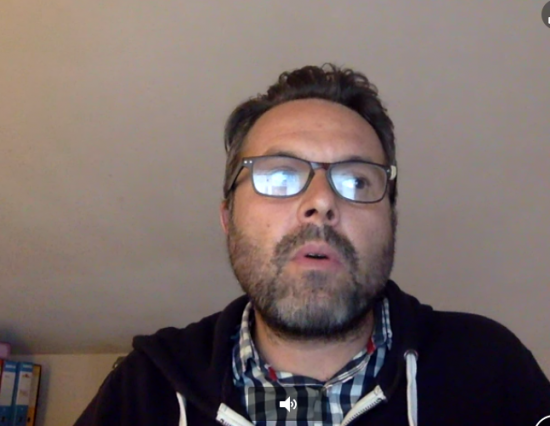By Katie Dahl
This week’s roundup includes five fact-checks of statements by public officials, preserved on TV News Archive. Our fact-checking partners examined the financial disclosures of the president, who outspent whom in the Georgia election, and whether high ranking Democrats voted for a border wall a decade ago.
Claim: Child care is the largest expense in more than half of American households (mostly false)
Ivanka Trump, first daughter and adviser to President Donald Trump, participated in a panel in Berlin with German President Angela Merkel. While there, she said the “single largest expense in over half of American households is childcare, even exceeding the cost of housing.”
“Child Care Aware, a trade and advocacy group, found that it cost on average over $17,000 a year for infant day care in Massachusetts,” reported Jon Greenberg for PolitiFact. “The question is, does paying for child care top all the other expenses that half of the households have to cover, such as housing and food?…Government data suggests it does not. For most families, the No. 1 cost is housing.” The Washington Post‘s Fact Checker, Glenn Kessler, also reported,”[S]he would have been on more solid ground if she had focused on low-income households or families with small children, not all households.”
Claim: Nobody applies to the U.S. for refugee status. They apply to the U.N. (false)
“Nobody applies to the United States for refugee status. They apply to the United Nations,” said Sen. Claire McCaskill, D., Mo., during a January senate hearing for Rex Tillerson’s nomination as Secretary of State.
PolitiFact Missouri reporter Aleissa Bleyl reported this week that “about 20 percent to 30 percent of resettlement cases are handled by the United States and not the U.N… Overall, most refugees seeking resettlement to the United States must first go through the United Nations High Commissioner for Refugees. However, refugees with nuclear family members already living in the United States are given a different priority that isn’t processed through the United Nations.”
Claim: Trump has given more financial disclosure than anybody else (false)
After receiving a question about whether the president would release his tax returns, Treasury Secretary Steve Mnuchin said, “The president has no intention… The president has released plenty of information and, I think, has given more financial disclosure than anybody else. I think the American population has plenty of information.”
Allison Graves and Louis Jacobson rated Mnuchin’s statement as “False,” reporting for PolitiFact, “Trump released a financial disclosure report that all presidential candidates are required to fill out, but the fact that Trump has not released any tax filings undermines Munchin’s claim… the lack of transparency around his tax returns remains a significant omission compared with recent presidents.”
Claim: Ossof was outspent two to one in Georgia race (unsupported)
Neither candidate received enough votes to win outright in the race for Georgia’s 6th Congressional District, in a special election to replace Tom Price, who now heads the U.S. Department of Health and Human Services. A runoff is now scheduled for June. Explaining the outcome, Democratic National Committee Chairman Tom Perez said,“By the way, Chris, he was outspent two to one. I mean Paul Ryan’s super PAC was in. They hit the panic button big-time on the Republican side.”
But, “the Federal Election Commission campaign finance records don’t support his claim that Ossoff was ‘outspent two to one.’” According to Eugene Kiely and Robert Farley at FactCheck.org, “Ossoff and the outside groups who supported him spent more than the Republican groups that opposed him.”
Claim: Obama, Schumer, and Clinton voted for a border wall in 2006 (half true)
White House budget director Mick Mulvaney recently defended proposed funding for a border wall between the United States and Mexico. “We still don’t understand why the Democrats are so wholeheartedly against it. They voted for it in 2006. Then-Sen. Obama voted for it. Sen. Schumer voted for it. Sen. Clinton voted for it,” he said.
“They did vote for the Secure Fence Act of 2006, which authorized building a fence along about 700 miles of the border between the United States and Mexico,” reported Allison Graves for PolitiFact. “Still, the fence they voted for is not as substantial as the wall Trump is proposing. Trump himself called the 2006 fence a ‘nothing wall.’”
Follow us on twitter! We’ve changed our name from @PolitAdArchive to @TVNewsArchive.
We’ve changed our handle! @PolitAdArchive now @TVNewsArchive. Search our public, online TV news collection: https://t.co/ZzphyYE0xk pic.twitter.com/RfeyrIyTSu
— TV News Archive (@TVNewsArchive) April 28, 2017
To receive the TV News Archive’s email newsletter, subscribe here.


